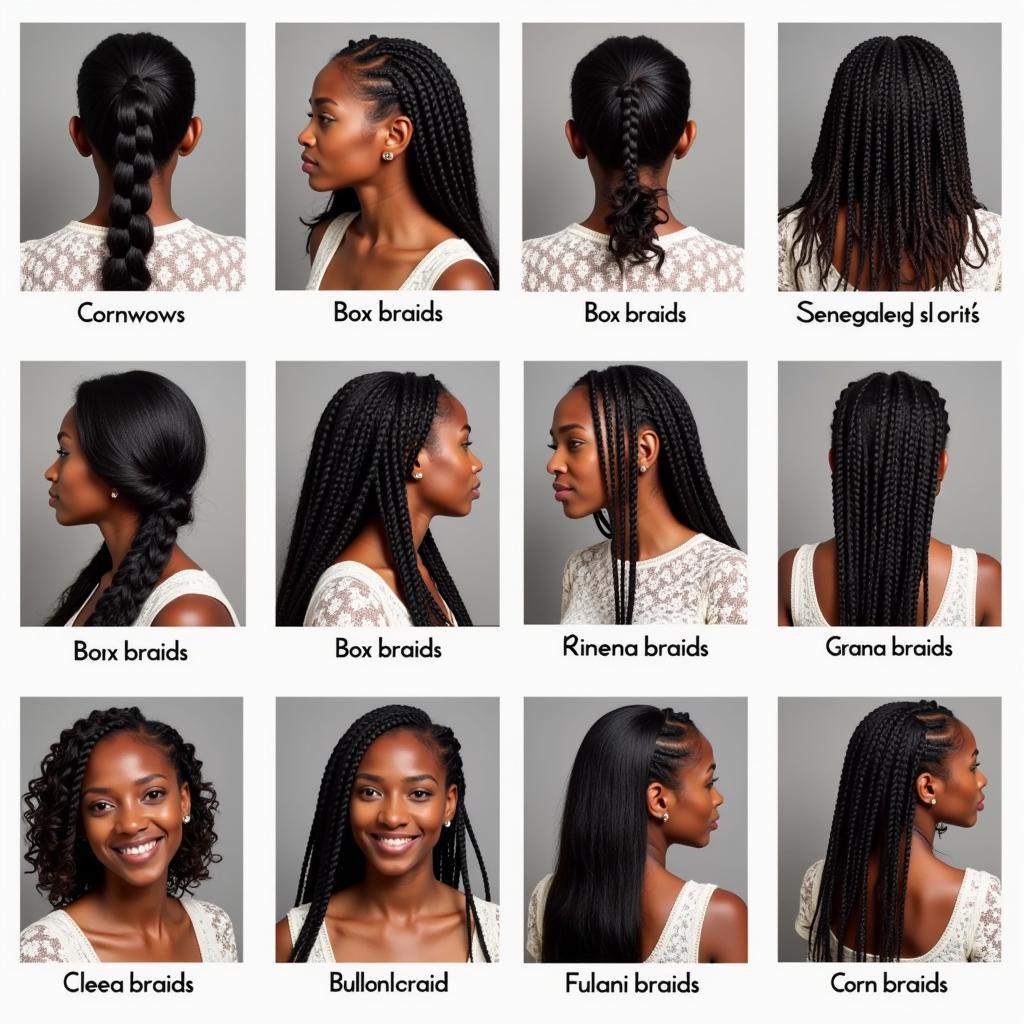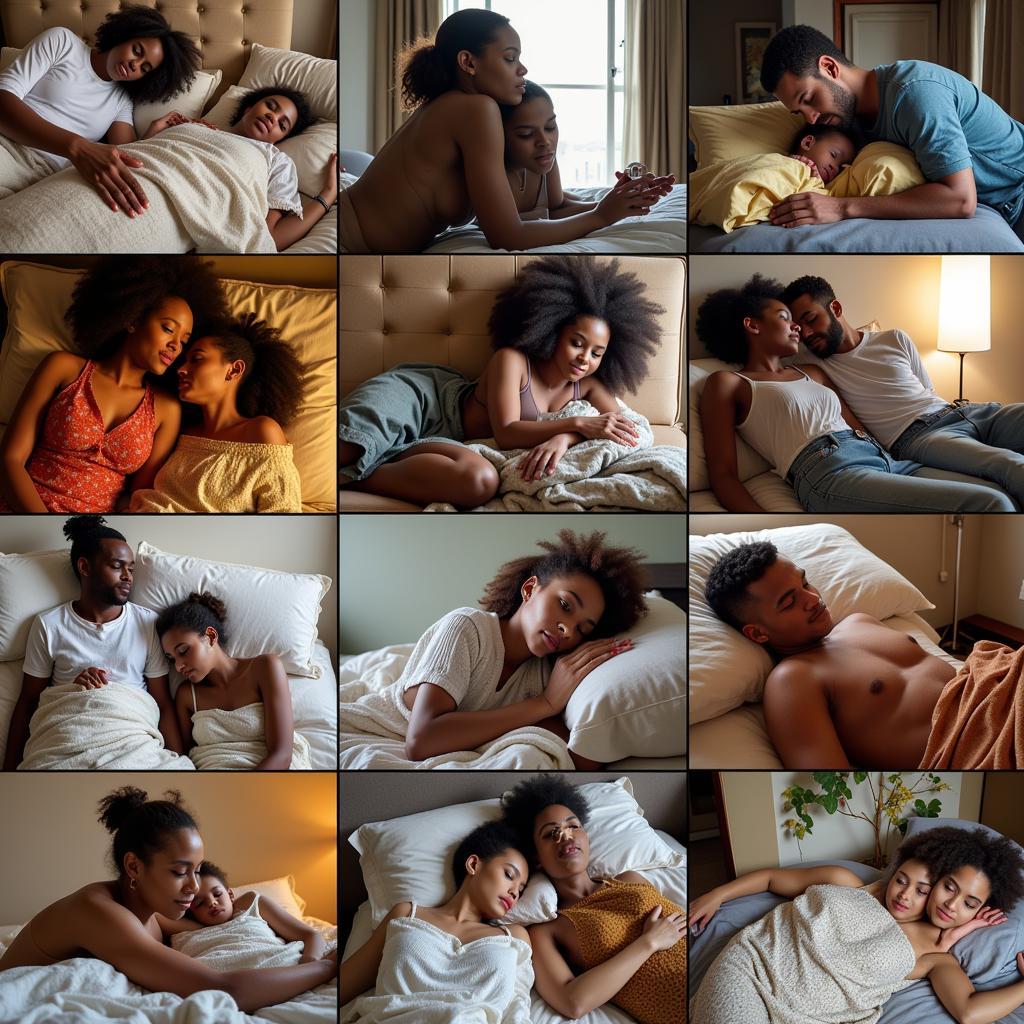African Braid Hairstyles Is Known As: A Journey Through Tradition and Style
African braid hairstyles, also known as protective hairstyles, are more than just intricate patterns; they’re a vibrant tapestry woven with threads of history, culture, and artistry. From the bustling marketplaces of Accra to the serene landscapes of the Serengeti, braiding is an intrinsic part of African identity, passed down through generations and evolving with the times.
Unraveling the History of African Braid Hairstyles
The origins of African braiding can be traced back thousands of years, with evidence found in ancient Egyptian art and artifacts. These early braids were not just decorative; they signified social status, ethnicity, and even marital status. Think of them as an early form of communication, a visual language spoken through the intricate patterns woven into the hair. Over time, these traditions evolved, adapting to different climates, resources, and cultural influences, resulting in the breathtaking diversity of styles we see today.
For centuries, these hairstyles have served as a powerful symbol of cultural identity and heritage. They are a testament to the ingenuity and creativity of African people, showcasing their deep connection to their roots. African hair design goes beyond mere aesthetics; it’s a form of self-expression and storytelling.
Exploring Different African Braiding Styles: What are the names of African braid hairstyles?
African braiding encompasses a vast array of styles, each with its own unique name and significance. From the tightly woven cornrows, known for their geometric precision, to the flowing Fulani braids adorned with beads and rings, there’s a style to suit every taste and occasion. Some popular names for African braid hairstyles include:
- Cornrows: These tight braids lie close to the scalp, often forming intricate patterns.
- Box Braids: Small, square-shaped braids created using synthetic hair extensions.
- Senegalese Twists: Two strands of hair are twisted together to create a rope-like effect.
- Ghana Braids: Thick, raised braids that start small and gradually increase in size.
- Fulani Braids: A combination of cornrows at the front and long braids at the back, often adorned with beads and rings.
 Different African braiding styles with their names and variations
Different African braiding styles with their names and variations
What is African hair braiding called? The terminology can vary depending on the specific region or ethnic group, but the art form itself is universally recognized as a cornerstone of African culture.
The Cultural Significance of African Braids
African braids are more than just hairstyles; they’re a powerful expression of cultural identity. They tell stories of heritage, family traditions, and personal style. Imagine a young girl learning to braid from her mother, the rhythmic movement of hands passing down not just a skill, but a legacy. This intimate connection between generations is what makes African braiding so special. African braiding greenville nc is an example of how these traditions are being preserved and celebrated even outside the African continent.
Caring for Your African Braids
Maintaining your African braids is essential for their longevity and health. Regular moisturizing and gentle cleansing are key to keeping your scalp healthy and your braids looking fresh.
- How long do African braids last? Depending on the style and maintenance, braids can last anywhere from a few weeks to several months.
- Can I wash my hair with African braids? Yes, it’s important to wash your braids to keep your scalp clean and prevent buildup. Use a diluted shampoo and focus on cleansing the scalp.
Conclusion: Embracing the Beauty and Heritage of African Braids
African braid hairstyles, known by various names across the continent, are a testament to the rich cultural heritage and artistic ingenuity of African people. From their ancient origins to their modern interpretations, these hairstyles continue to evolve, offering a unique blend of tradition and style. Whether you’re drawn to the intricate patterns of cornrows or the flowing elegance of Fulani braids, embracing African braid hairstyles is a celebration of beauty, history, and self-expression. African Braid Hairstyles Is Known As a symbol of pride, a connection to ancestors, and a vibrant expression of identity. African girl hair style, in all its diversity, continues to inspire and captivate.
FAQ
- What is the most common African braid hairstyle? Cornrows are one of the most common and versatile African braid hairstyles.
- How long does it take to get African braids done? The time varies depending on the complexity and length of the style, ranging from a few hours to a full day.
- Are African braids damaging to hair? When done correctly and cared for properly, African braids can actually protect hair and promote growth.
- Can anyone wear African braids? Absolutely! People of all ethnicities and hair textures can enjoy the beauty and versatility of African braids.
- What are some traditional accessories used with African braids? Beads, cowrie shells, and rings are often used to decorate and enhance African braid hairstyles.
For more information on African bridal wear, check out this article: African cultural bridal wear
Need assistance? Contact us at +255768904061, [email protected], or visit us in Mbarali DC Mawindi, Kangaga, Tanzania. We have a 24/7 customer service team.



